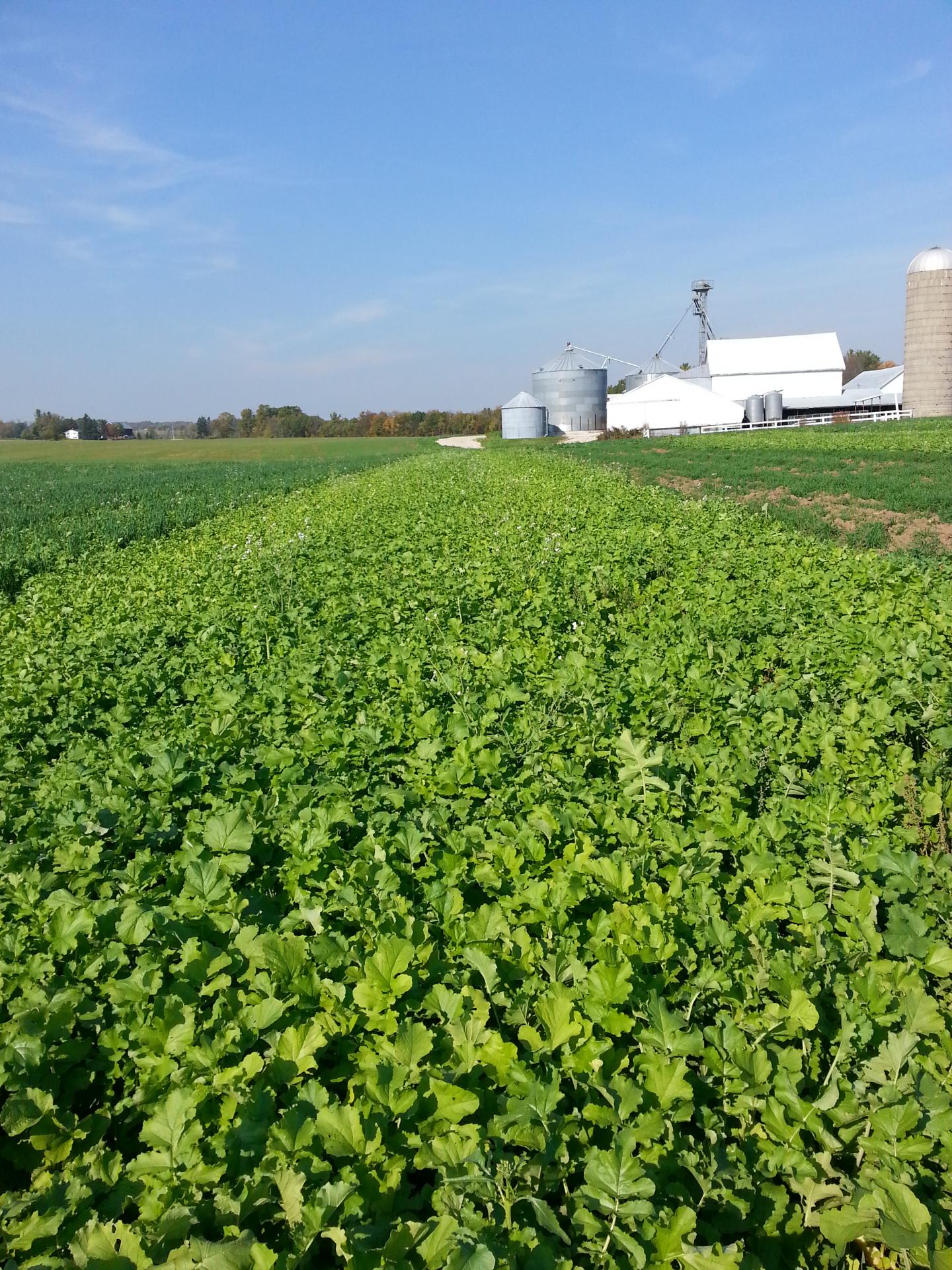
Credit: Matt Ruark.
When you think of a radish, you may think of the small, round, crunchy, red-and-white vegetable that is sliced into salads. You might be surprised to learn that a larger, longer form of this root vegetable is being used in agriculture as a cover crop.
Cover crops are grown between main crops such as wheat, corn, or soybeans when the soil would otherwise be bare. Cover crops can control erosion, build soil, and suppress weeds. Radish as a cover crop can provide these benefits and more. The long radish root creates deep channels in the soil that can make it easier for subsequent crops to reach water in the soil below.
Radish is also known to benefit water quality. It does so by taking up nitrogen, in the form of nitrates, from the soil. This leaves less nitrogen in the soil that can run off to nearby streams and lakes.
Matt Ruark of the University of Wisconsin-Madison and colleagues wanted to know more about the effect of this nitrate uptake in the following growing season. They established test sites in three Wisconsin locations and studied them for three years. At each site, some plots received the radish cover crop and some did not. The radish cover crop was planted in August after a wheat harvest. Corn was planted the following spring.
The research showed that radish significantly reduced the nitrate content in the soil as compared to the test plots with no cover crop. This finding confirmed the results of several earlier studies. It showed that radish did take up nitrogen, in the form of nitrates, from the soil.
This research supports the use of radish as a cover crop as a trap crop for fall nitrogen. However, what happens to that nitrogen afterward remains unknown.
There was no consistent evidence that nitrogen was returned to the soil as the radish crop decomposed. Radish did not supply nitrogen to the corn crop. The researchers concluded that in the Upper Midwest the nitrogen in radish could not replace fertilizer.
Ruark commented, "Radish grows well when planted in late summer and traps a lot of nitrogen. But the way it decomposes doesn't result in a nitrogen fertilizer benefit to the next crop. We don't know exactly why. We were hoping it would provide a nitrogen benefit, but alas, it did not."
What happens to the nitrogen? The decomposition pattern of radish needs to be explored more fully to learn more. And perhaps, Ruark said, radish could be more beneficial if mixed with a winter-hardy cover crop.
###
Read more about Ruark's work in Agronomy Journal. The Wisconsin Fertilizer Research Council funded this research with additional support from the Leo Walsh Graduate Fellowship.
Media Contact
Susan Fisk
[email protected]
608-268-3976
@ASA_CSSA_SSSA
http://www.agronomy.org
Related Journal Article
http://dx.doi.org/10.2134/agronj2017.06.0352





